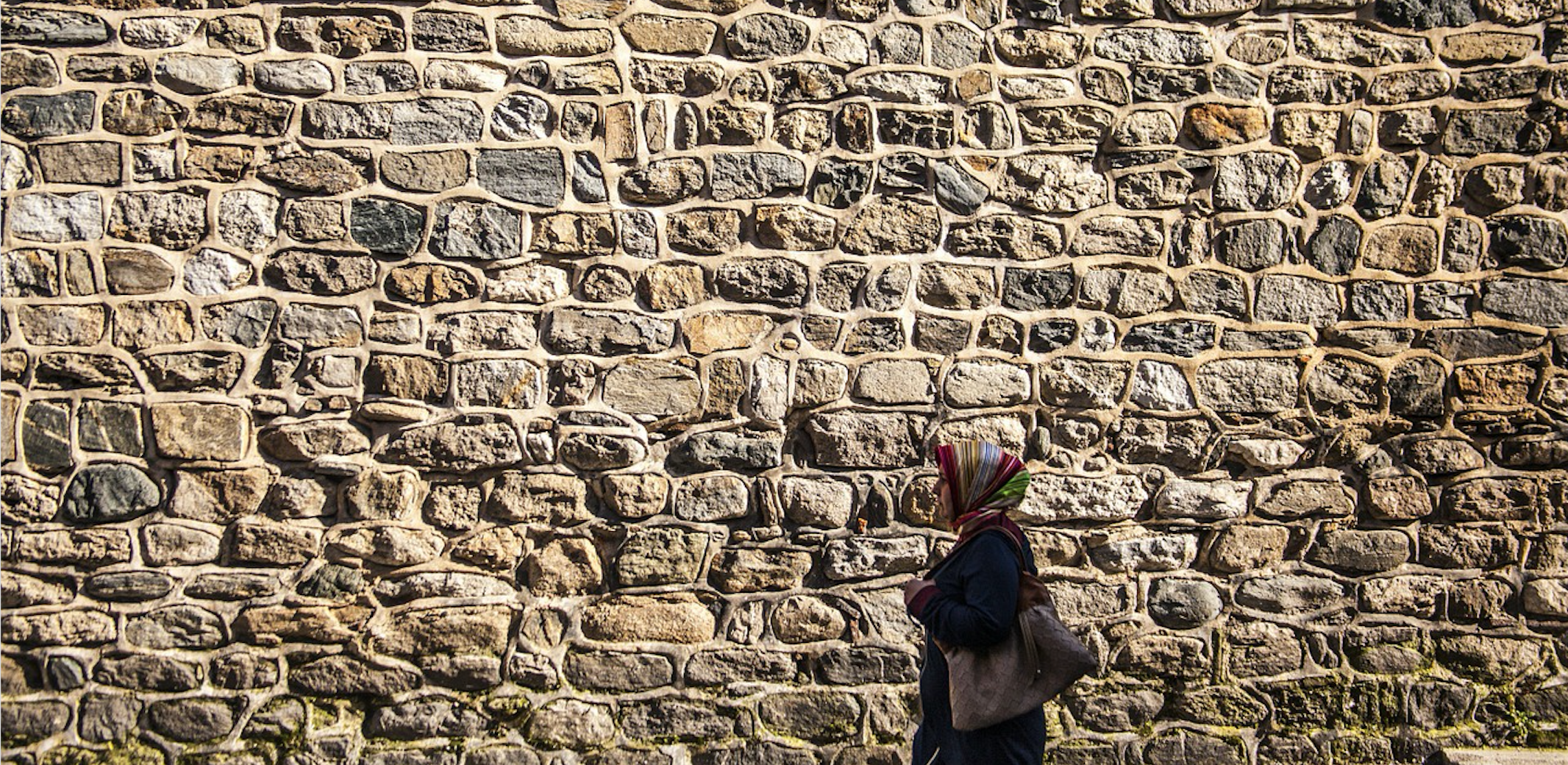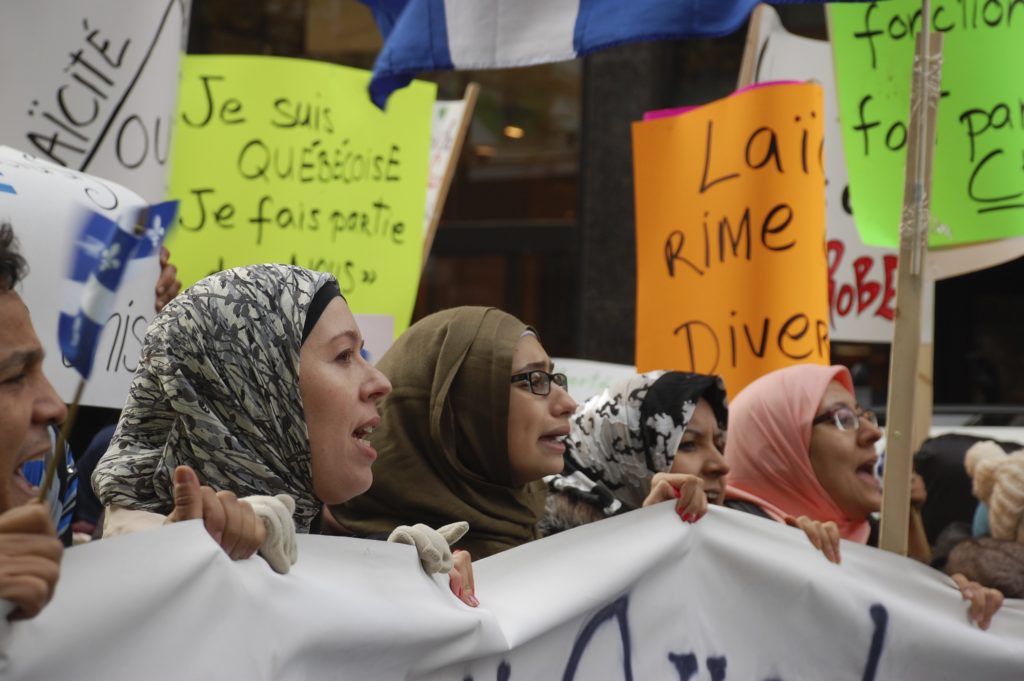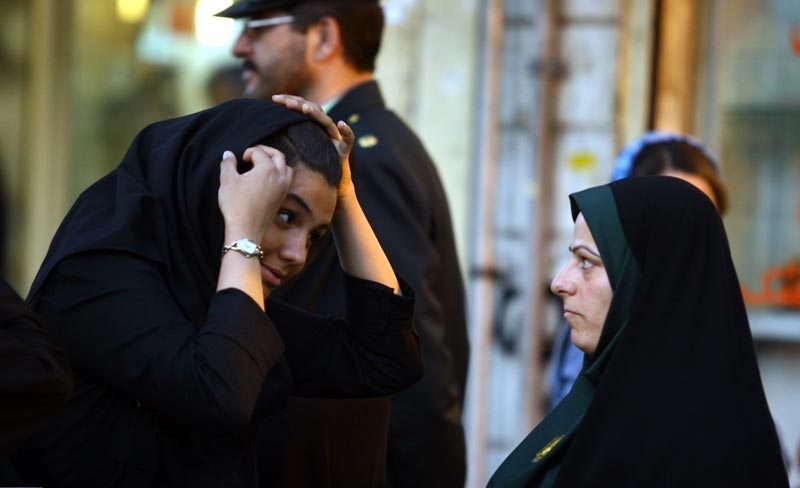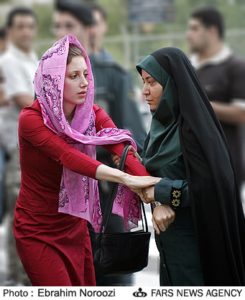Unveiling Islamic Feminism: Where Religion Meets Women’s Rights

On October 18th, Quebec’s government passed Bill 62, banning Muslim women from wearing niqabs and burqas when using public services in Canada. In the weeks following, women heavily protested the evident discriminatory nature of the bill, oftentimes by covering their faces in public transports, or by taking to the streets of Montreal, as covered last week by MIR.
Along with heated controversies concerning the veil, debates regarding the minefield that is Islamic feminism have resurfaced – Muslim women are still obliged to make a choice between their religious faith and their rights as women, suggesting that both cannot coincide with one another. Furthermore, as Bill 62 has shown, the veil remains a symbol of oppression and those who wear it, the oppressed.

Although often discredited by scholars, the static and largely colonial image of the veiled and oppressed Muslim woman is ongoing amongst Western discourses. Excesses of the Islamic regime towards women continue to make headlines and little to no acknowledgement is attributed to the successes of Muslim feminist activists attempting to gain a foothold in Arab politics.
In this piece, we are going to look at how Muslim women have navigated these murky waters and have created their own feminism, one that is contemporary, democratic and, unapologetically, Islamic.
By focusing on feminist movements thriving within Middle Eastern countries, it will become clear that the fight for women’s rights is not only well established in Islamic contexts but is also highly representative of their national identities. Muslim women are prominent social actors, continuously redefining institutions and laws that shape gender relations in both the public and the private sector. The veil, or more specifically the hijab, remains an arena where discourses clash.
Nevertheless, contemporary feminist discourses concerning the veil differ widely from country to country and have contributed greatly to understanding the hijab as a marker of one’s personal identity, rather than a manifestation of their freedom. At the centre of these narratives lie two movements – secular feminism and Islamic feminism.
On one hand, secular feminists are generating a discourse that hopes to dismantle the patriarchal structure prominent in Middle Eastern societies by democratizing state institutions and civil society. At the core of this movement lies an Islamic modernist discourse, which claims women’s freedom can only be catalyzed by a modernization of the state. Tied to these discourses, secular feminists have had little success reforming Muslim personal state codes or family laws. Furthermore, secular feminists do perceive the hijab as a patriarchal mandate, which denies women the right to choice and the right to control their bodies.
Islamic feminists, on the other hand, argue that Islam is not the root of gender inequality in the Middle East. Instead, patriarchal values are understood as finding their roots in state actors and elites who have manipulated Islamic texts for their own political ends. Islamic feminists advocate for a feminism that stems from Islamic faith, encouraging feminists in Middle Eastern societies to embrace their faith and traditions whilst seeking to reform legislation and justice systems that penalize women’s rights. Their movement seeks momentum in the re-interpretation of the Qur’an, the fiqh and the Shari’ah, which regulates all aspects of the Muslim life, including veiling.

Both movements gained particular traction during the twentieth century. However, Islamic feminism received considerably less attention by both Western and Middle Eastern press, even whilst holding more attention from Muslim women forging a place in Middle Eastern societies. This is interesting to note because it indicates the success of a feminist movement based solely on Islamic faith, yet alternatively the refusal of the press to document a Muslim feminist movement that isn’t symptomatic of ethnocentrism.
Furthermore, by establishing a movement which questions Koranic teachings and Islamic jurisprudence, Islamic feminists are persuading Muslims that Sharia laws are not divine but in fact subject to discussion. This not only allows Muslim women to engage with their religion whilst speaking up against their oppression, but also challenges the consistent image of the Muslim woman as veiled and oppressed.

Contemporary notions of the hijab in Middle Eastern countries are based on different readings of Islam’s sacred texts and juristic constructs. In Iran for instance, the fiqh’s construction of the hijab has often been subject to reinterpretation – the first, in 1936, when Reza Shah Pahlavi made the wearing of hijab in public a punishable offence, and the second, in 1979, when Ayatollah Khomeini, the supreme leader at the time, imposed it.
Today in Iran, the hijab is no longer the same symbol of protest it was in 1936, but instead is associated with gender discrimination and the confinement of woman. State representations of the hijab have fabricated the image of an ideal type of Iranian woman as one who is covered by the black chador. Enforced by both police forces and civilians, the chador has thus become a symbol of deprivation of woman’s right to self-expression. Under a conservative reading of the fiqh, juristic arguments are formulated by the government to justify state impositions on a piece of clothing. However, women throughout Iran are defying the rule of hijab and developing a feminist discourse around alternative readings of sacred texts.
Nevertheless, outside of Iran’s borders, Muslim women are also embracing the hijab as a marker of a new identity or as a form of protest, wherein they can redefine their presence in public spaces. For instance, The Sisters Project is a photo series of Canadian Muslim women taken by Alia Youssef to counter the one-dimensional image stamped on Muslim women. In her series, she photographs Aima, a young Pakistani student wearing the niqab. In her interview, she says, “This is what feminism looks like to me, this is what empowers me.”, thus advancing the idea that feminism doesn’t lie in what you wear but rather from your right to choose. Here, the hijab doesn’t silence her feminist voice; on the contrary, it expresses it.
While Bill 62 is encouraging debate and a new narrative of the burqa and the niqab as pieces of one’s identity, it should also encourage the surfacing of Islamic feminism as an accredited movement that constantly revises and defines women’s role in Middle Eastern society. This evidently does not suggest that the situation of Iranian women is ideal or even reasonable, but the lack of interest of achievements within Muslim feminist movements on the part of scholars and North American feminist activists is remarkable and further contributes to maintaining the image of Islam and the veil as completely static.
Islamic feminism teaches us that veiling is a lived experience which embodies a variety of meanings for Muslim women around the world. While Islamic law has clearly served as a means of regulating women’s lives in the service of patriarchy, women have in turn spoken up against their oppression by appealing to these same social institutions.
The idea that Islamic texts are open to reinterpretation and can lead to changes in gender dynamics within Middle Eastern countries communicates the important image that Muslim women, wherever they find themselves, can and will engage with their religion to find an identity that resonates with their feminist standpoints.
Edited by Alec Regino
